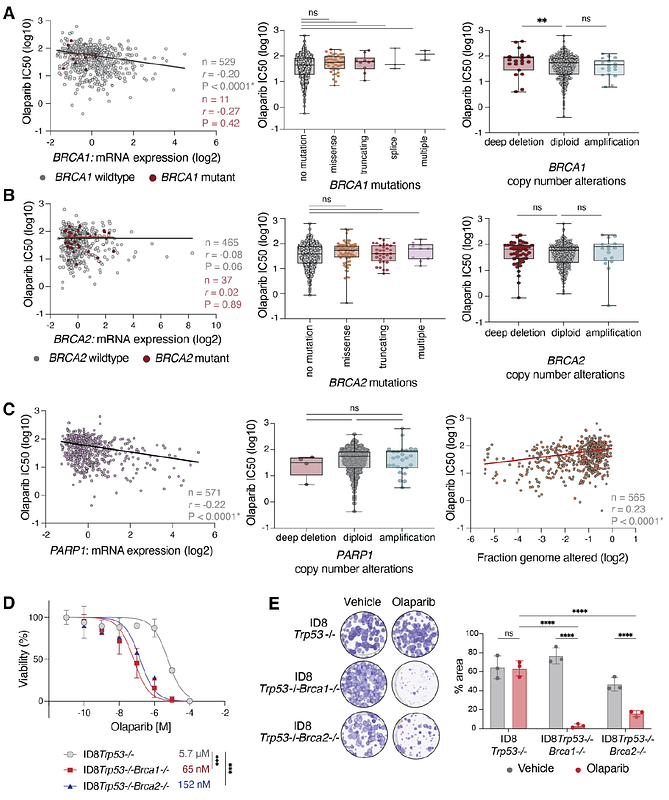Unmatched cell line collections are not optimal for identification of PARP inhibitor response and drug synergies

Unmatched cell line collections are not optimal for identification of PARP inhibitor response and drug synergies
Phan, Z.; Fernandez, K. J.; Caldon, C. E.
AbstractPurpose: While PARP inhibitors have shown great efficacy in patients with BRCA1 and BRCA2 mutations, many preclinical studies, including combination therapies, fail to translate into clinical approval, potentially due to the limitations of preclinical models. The goal of this brief report was to identify appropriate cell line models to investigate PARP inhibitor sensitivity and synergies. Methods: An in-silico study of cell line collections was performed to assess the correlation between BRCA1 or BRCA2 mutations and sensitivity to PARP inhibitor monotherapy or combination therapy with a platinum-based chemotherapy. Subsequently, we characterised an isogenic model with matched cell lines containing Brca1 and Brca2 mutations and investigated the response of cells to PARP inhibitor alone, or in combination with chemotherapy. Results: Using cell line collections, cell lines with BRCA1 and BRCA2 alterations are not associated with increased sensitivity to PARP inhibitors. Other factors, such as high PARP1 expression and low-level genome alterations showed correlation with increased sensitivity to a PARP inhibitor. Furthermore, cell line collections did not reflect the synergy observed in patients to combination PARP inhibitor and platinum-based chemotherapy. Subsequently, we demonstrated that the ID8 isogenic model cell lines with specific mutations in Brca1 and Brca2 represent patient response to PARP inhibitor monotherapy, and in combination with chemotherapy. Conclusions: This study suggests exercising caution when using cell line collections as part of model selection when investigating PARP inhibitor sensitivity and synergy. Our data proposes that using an isogenic preclinical model is more likely to accurately reflect patient response.